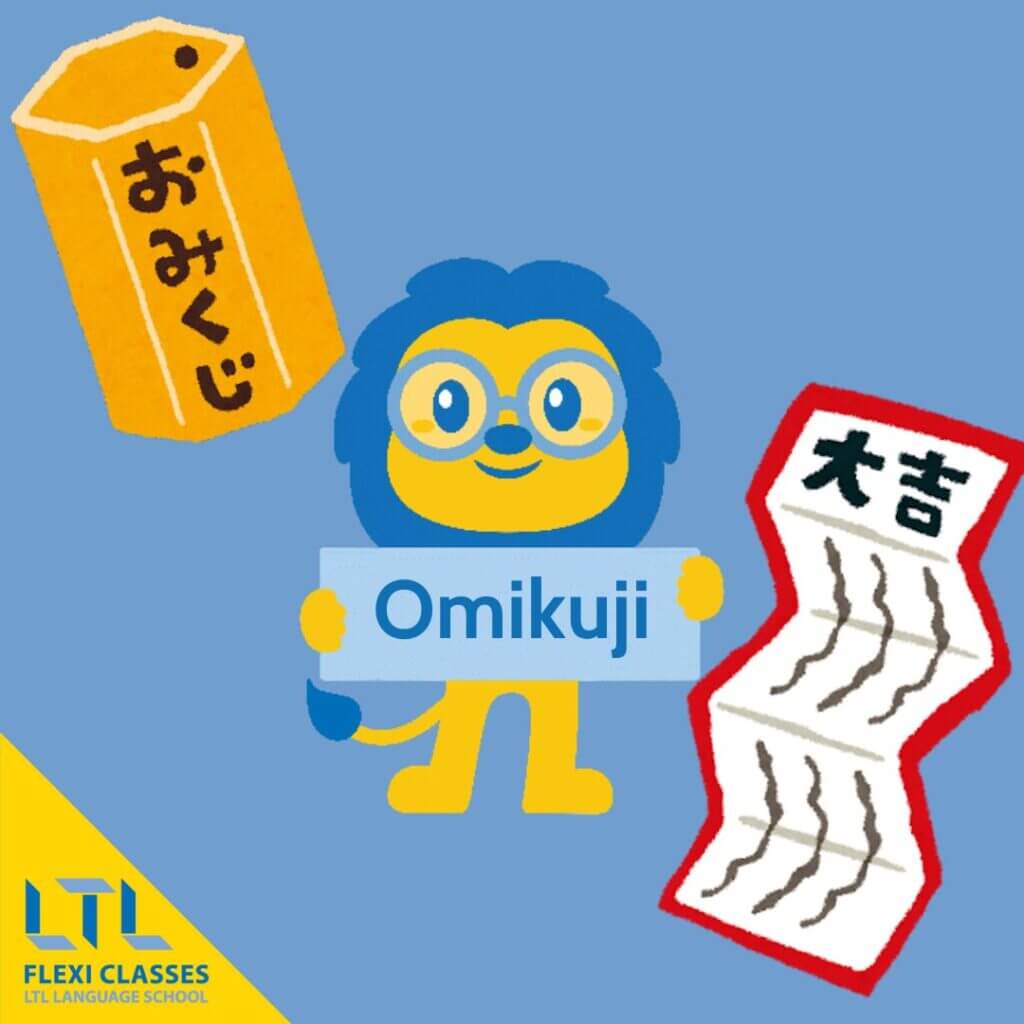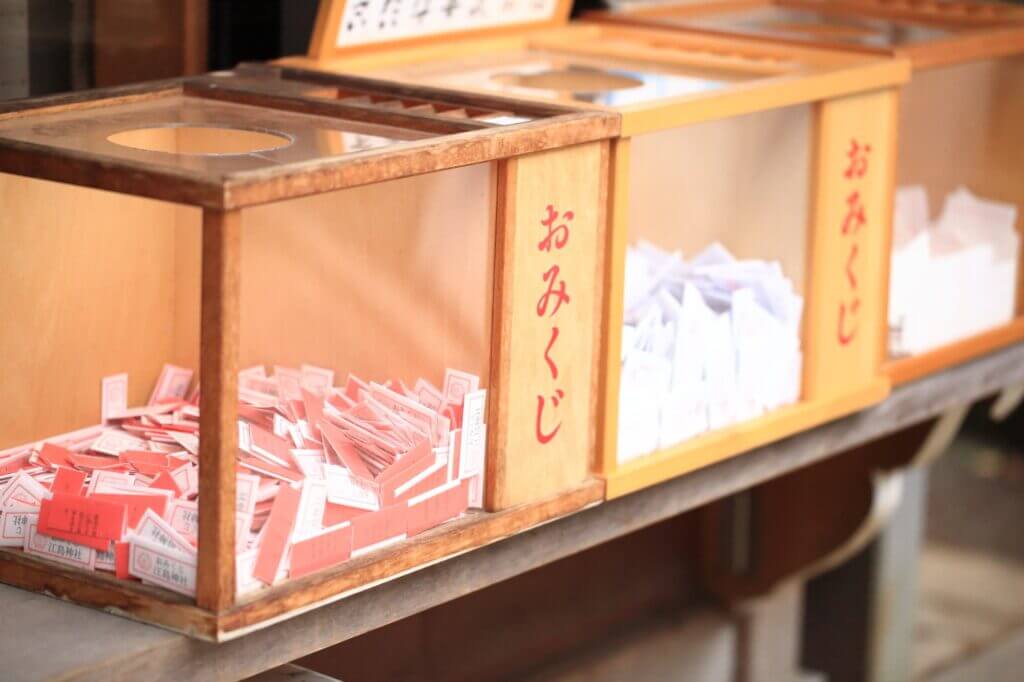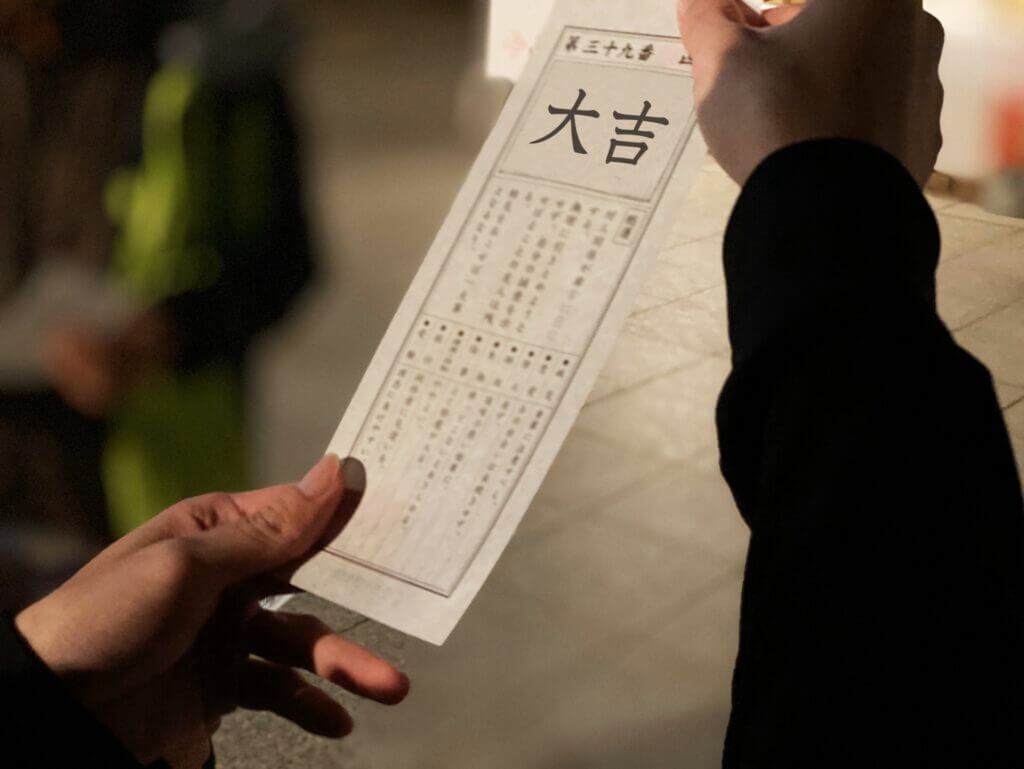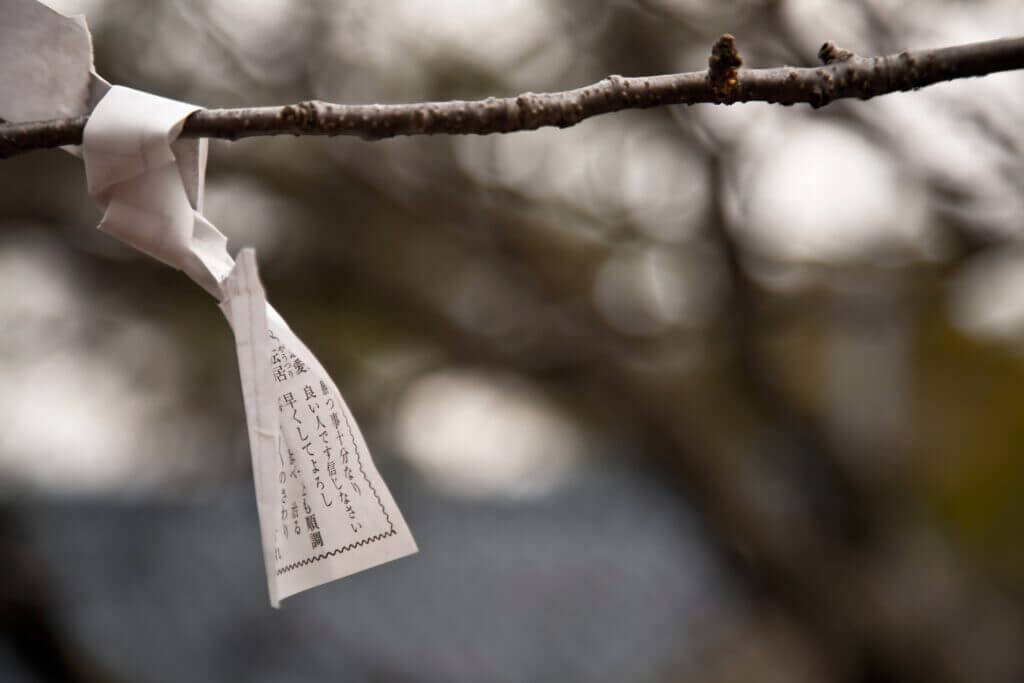Omikuji || Interpret your fortune in traditional Japanese way
How to Read an Omikuji and Interpret Your Fortune
Are you interested in fortune-telling?

Omikuji ( おみくじ ) is a traditional Japanese practice of fortune telling that anyone can try in Shinto shrines (神社: Jinjya) or Buddhist temples (寺: Tera).
As omikuji can be easily found when you visit shrines or temples across the country, it is surely an exciting way to find out how lucky you are!
Let’s explore the origins, customs, and meanings of Omikuji.
Omikuji || Origins
Omikuji || How does Omikuji work?
Omikuji || Interpretting Omikuji
Omikuji || What to do after drawing Omikuji?
Omikuji || FAQs
Origins of Omikuji
Omikuji originated in the Heian period (794-1185) and was initially used by aristocrats and samurais as a way to communicate with the gods to seek guidance. Since the early Kamakura Period (1185-1333), it became a popular form of fortune-telling and spread throughout Japan.
There is another theory that Omikuji was brought into Japan from ancient China around the 7th century and later developed into the current style with original uniqueness.
Today, Omikuji is still widely used, adapting to the changing cultural landscapes, and is often seen as a fun way to learn about one’s future.
Although there are a couple of theories for its origin, omikuji has held a special place in Japanese culture as a symbol of hope, and reflection of the belief in the gods.
It is also an annual custom to go to a temple or shrine on New Year’s Day to get Omikuji to seek blessings and guidance for the year ahead.
Its significance is beyond the part of the annual event, but it also comforts us in uncertain times in our lives by offering guidance and an opportunity for self-reflection:)
How Does Omikuji Work?
Let’s find out how to try Omikuji!

To experience Omikuji, you must go to a shrine or temple. Most shrines and temples have a designated area for Omikuji, with a wooden box or container.
The methods of drawing an Omikuji depend on the place. But usually, after inserting a small amount of coin (¥100-200) into the box, it is either shaking the box until a numbered stick comes out and exchanging it with the paper or taking out the rolled-up paper from the box.
Travel Tip
Prepare some small coins when visiting shrine or temple! They don’t accept cards as a payment.
Each paper has a written fortune, and now it is time to interpret what Omikuji says about your fortune!
Interpreting Omikuji
Standard omikuji is classified into 6 levels of luck.
| Meaning | Japanese |
| Excellent | 大吉 (dai-kichi) |
| Great | 中吉 (chu-kichi) |
| Small Blessing | 小吉 (shou-kichi) |
| Uncertain | 末吉 (sue-kichi) |
| Bad | 凶 (kyou) |
| Very Bad | 大凶 (dai-kyou) |

As you can see from the table above, the level of luck ranges from excellent to very bad fortune. It determines the level of fortune or misfortune associated with the omikuji you got.
This overall luck is usually written on the top of the paper.
Excellent: Dai-kichi (大吉)
Dai-Kichi indicates that you can expect the best luck, prosperity, and success in various aspects of life. If you get Omikuji, which Dai-Kichi is written, you are extremely lucky!
Great: Chu-Kichi (中吉)
Chu-kichi does not bring you as much luck as Dai-Kichi could bring, but it still brings you positive opportunities and luck, although you may encounter some problems along your path.
Small Blessing: Shou-Kichi (小吉)
Shou-Kichi indicates that the blessings might be modest, but you can still get some guidance on your life path. It reminds you to appreciate the small joys and blessings that are coming your way.
Uncertain: Sue-Kichi (末吉)
Sue-Kichi is the least favourable of the “good = 吉” fortunes. But it means your fortune will come later in the future. So this indicates hope, and you may get even better luck than Dai-Kichi holds.
Bad: Kyou (凶)
Kyou tells you there will be potential challenges and unfavourable situations. But don’t worry! This is rather a reminder to approach some obstacles in your life with resilience, not a prediction. The Omikuji paper will warn you by advice to guide you in making wise decisions to go through difficult times:)
Very Bad: Dai-Kyou (大凶)
The Dai-Kyou tells us that you have to be cautious of significant obstacles, setbacks, or difficult times ahead. But there is no need to be discouraged if you get this one; it has a meaning that you can grow as much as you want on your own.
Omikuji paper also has other sections that give you an insight into various aspects of your life.
Here are the things that you can find in Omikuji paper:
Negaigoto (願事🙏)
The section dedicated to “negaigoto” represents the possibility of your personal wishes or desires will come true. It encourages you to reflect on what you truly long for or aspire to achieve in your life. It also serves as a reminder to set goals and pursue your dreams with determination and perseverance.
Machibito (待人👤)
“Machibito” refers to a person you have been eagerly waiting for. This could be a loved one, a close friend, or someone important to you. It signifies that the awaited person will soon arrive or that the timing is right for a significant encounter.
Tabidachi (旅立ち🛫)
“Tabidachi” refers to travel or embarking on a journey. When this appears on your omikuji, it signifies that an opportunity for travel may be on the horizon. It could indicate the trip that may bring new experiences, personal growth, or a change in perspective.
Usemono (失せ物🔎)
The “usemono” section writes about your lost belongings. Lost belongings could be a personal item, or it could represent something more abstract, such as a missed opportunity. It provides guidance on lost belongings and may offer clues on how to find or replace them. It reminds you to be attentive to your belongings and take appropriate actions to recover what has been lost.
Akinai (商い👨💻)
The term “akinai” relates to business dealings. It signifies that matters related to trade, entrepreneurship, or finance. This section tells you about the possibility of encountering opportunities or challenges in this realm. It advises you to approach your business with careful consideration and wise choices.
Renai (恋愛❤️)
“Renai” focuses on romantic relationships and matters of the love. It suggests that there may be developments or changes in your love life. It encourages you to be open to new connections, express your feelings, or nurture existing relationships.
Endan (縁談💍)
The term “endan” refers to “prospective marriage” in Japanese. This section will tell you about the possibility of a significant relationship that could lead to marriage, or it may indicate that you should consider exploring the idea of entering into a committed partnership.
Tenkyo (転居🏡)
The term “tenkyo” relates to moving or changing residence. It will evaluate your current living environment and may recommend you to have a fresh start in different locations. It will also become a reminder for you to consider the practical aspects of such a change of residence, including logistics, financial matters, and the impact on your social connections or support network in the new place.
Gakumon (学問✏️)
The “Gakumon” section focuses on studies or learning. It highlights the importance of the pursuit of education and intellectual growth. Gakumon includes formal education, self-study, mentorship, or any activities that you are curious about. It encourages you to invest time and effort in your educational endeavors, or may even suggest a particular field that could expand your horizons.
Remember that Omikuji is not a definitive prediction of your future, but rather as guidance that you interpret with an open mind. Don’t get anxious even if you get some worrisome results!
What to Do After Drawing an Ommikuji
Once you draw an Omikuji and interpret what is written on it, there might be one question that pops up in your mind: What should I do now?
Let’s find out the customs to embrace the best luck or ward off misfortunes.
Did you know? Drawing an Omikuji is おみくじを引く (omikuji wo hiku) in Japanese.
Keep or Leave Omikuji?
If you get Dai-Kichi, you can keep it as your lucky charm. Some people keep it inside their wallet when their wish is related to financial matters. Others place it at home as an alternative to a shrine or temple to attract blessings!

If your Omikuji is not Dai-Kichi, you should tie the paper to a designated spot in the shrine or temple, and the spot is usually on a tree or a rack.
This symbolizes leaving bad luck behind there to separate negative energy from us and seek protection from the Gods.
Following Advice
If your omikuji includes specific advice or suggestion, you should think about how you can incorporate it into your life. It is also a good idea to focus on a specific aspect of your life that you want to improve and ask for further interpretations from the priests.
There you have it – now you know everything you need to know about Omikuji!
Let us know what you think about Omikuji, or share about fortune telling in your country in the comment section below😁
Traveling to Japan soon? Get some inspirations for your travel ⬇️⬇️⬇️

Discover Tokyo // A Beginners Guide to Tokyo (Food, Transport + More)
Tokyo is an ideal destination for a trip, but you need to be well prepared. We’ve put together a guide to everything you need to know before you go to Tokyo.

Only in Japan || 12 Wonderful & Unique Places to Stay in Japan (+ A Bonus Entry)
If you’re looking for unique places to stay in Japan, you won’t be disappointed. Here are the 12 best places to stay in Japan with a bonus option also.
Omikuji || FAQs
When can I try omikuji?
You can try it in Shinto shrines (神社: Jinjya) or Buddhist temples (寺: Tera). You can find it easily all across Japan.
Is kyou or dai-kyou really bad?
They rather serve as a reminder than a prediction. Omikuji will give you some advice to overcome struggles, so there’s no need to be disappointed by the result that you get:)
What should I do after getting omikuji?
You can tie the paper to a specific tree or rack in a shrine/temple. There are many omikuji that are already tied, so you can find it easily. If you get dai-kichi (大吉), you should keep it as your lucky charm:)
Where can I practice speaking about Japanese culture in Japanese?
Check out our online Flexi Classes platform to practice speaking Japanese with our native-speaker teachers.
Want More From LTL?
WANT TO LEARN JAPANESE? Check out our online Japanese courses here.
We offer a 7-day free trial to all new students where you can study 24/7.
What about studying Japanese in Japan instead? We’ve got your back. Our Japanese courses in Tokyo can either be taken in small groups of no more than 5 students or individually for a more tailored experience.
We even offer incredible homestay experiences in Tokyo as well.
Come and be a part of this amazing community.









